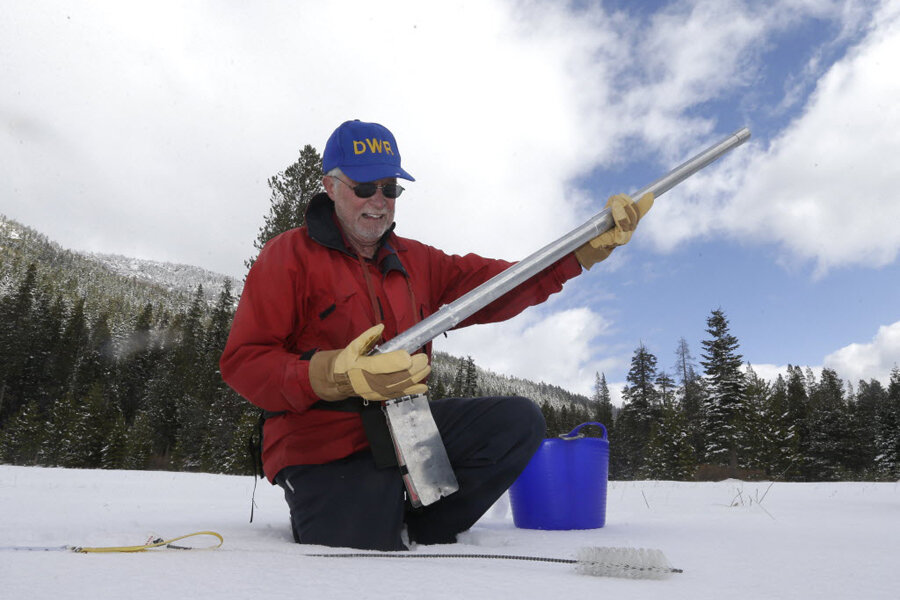New data on California drought present sobering picture for residents
Loading...
| Los Angeles
The latest data on rain and drought in the Golden State are a shade better than last year at this time. But, given that this past year was nearly the worst on record, “that makes this current news pretty abysmal,” says Jay Lund, professor of civil and environmental engineering at the University of California, Davis.
According to Tuesday calculations by the California Department of Water Resources (DWR), which conducts monthly measurements during the winter, the all-critical snowpack in the California Sierras is at just 19 percent of the early-March average, a nearly historic low.
“The only year it was lower was 1991 when it was 18 percent,” points out DWR public information officer Doug Carlson. “We are right on the cusp of the worst reading since 1950,” when current record keeping began.
The snowpack is vital to the overall water supply in the state, providing some 30 percent of water needs as it melts into rivers, lakes, and streams throughout the spring and summer months. The DWR has one more measurement scheduled on April 3.
Additional data released Tuesday show that the state’s two largest reservoirs – Lake Oroville and Lake Shasta – are also seriously depleted. Oroville stands at 49 percent of its 3.5 million acre-foot capacity, while Shasta is at 58 percent of a 4.5 million acre-foot potential.
Add to that the equally sobering news that Californians slipped in statewide water conservation from a 22 percent savings in December down to 8 percent the following month. January stands as the driest on record: San Francisco had no precipitation at all during the month, which may account for the uptick in urban water use.
Nonetheless, Californians are clearly not doing their part, says Max Gomberg, senior environmental scientist for climate change at the State Water Control Board.
Urban water use represents some 20 percent of human water consumption, he notes, with agriculture accounting for a hefty 80 percent. The economic impact on farming in California is likely to become even more serious.
“We already have thousands of farmworkers out of jobs,” Mr. Gomberg says, as well as land being fallowed and drastic cutbacks in water deliveries in place.
“There is much more that can be done at the urban level,” he says. “There are still many lush green lawns around this state, which is a luxury that the state, now in its fourth year of drought, cannot afford.”
Gov. Jerry Brown (D) has called on Californians to cut water consumption by 20 percent statewide. While the current data show residents falling short, some 95 percent of communities do have some form of mandatory water restrictions in place. These include bans on lawn watering during the day and hosing down driveways.
The data are intended to highlight how much more needs to be done, Gomberg says.
“The drought situation is so dire,” he says. If the current situation continues, while the snowpack dwindles and ground-water basins are being depleted, “we have no more reserves to rely on.”







